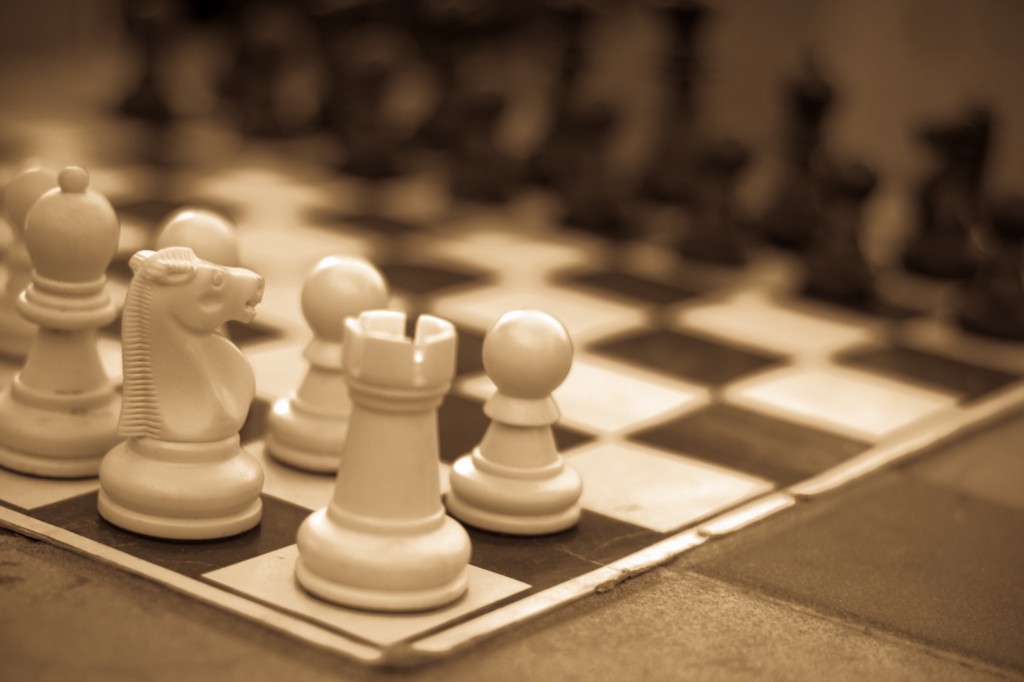Making The First Move
At the 2016 World Chess Championships

The bouncer guarding the door to the World Chess Federation’s Championship in New York City on Wednesday was polite, but firm. Twinkling braces sliced across his large, white teeth. “We’re not supposed to let anyone in until one. They’re almost finished setting up.” The large, conservatively dressed crowd on the Fulton Market curb groaned good-naturedly. People wearing fedoras pulled out crossword puzzles, Russian news crews brandished cameras, and the few women amongst the multitude of men made friendly, significant eye contact.
A cluster of people were talking animatedly with their hands. “The Fischer-Spassky game captured everyone’s interest,” explained Tom Elmquist, a cardiologist from the Upper West Side. He was referring to the famed 1972 clash between American grandmaster Bobby Fischer and defending Soviet champion Boris Spassky. The final took place in Iceland. “There were two commentators from The New York Times every day. You couldn’t watch the game, you could only read about it, because Fischer was in vehement opposition to a live broadcast.”
This year’s finalists raised no such objections to the intrusion of technology. Magnus Carlsen of Norway and Sergey Karjakin of Russia, both twenty-six, have Instagram accounts. Karjakin devotes much of his content to pictures of his wife, while Carlsen’s posts usually feature high-resolution images of his own, casually handsome face (Carlsen also received a glowing profile in The New Yorker in 2011). The entire tournament has been tracked by Twitter hashtags, livestream simulcasting, and television commentary.
Around 1 p.m., the hordes of chess fans were finally allowed inside. Miserable rain battered insistently against the broad market windows, but that didn’t stop many from venturing out onto a sheltered balcony to share cigarettes and abridged backstories. One of them was Christian De Luca, a stockbroker and master player from Buenos Aires—his English was limited to friendly chatter about Argentine steak and American hotels. There were several men like De Luca at the tournament: upper middle-class, eager to express enthusiasm for such an intellectually robust pastime.
When it was time to play, a few event coordinators descended upon a narrow black table bearing a simple wood board and several bottles of water. A broadcast technician adjusted his lens. A man wearing a well-cut suit entered the small room through a hidden door, crossed to Karjakin and the reigning champion Carlsen, and shook both their hands. Nobody in the audience, which was hidden behind a pane of thick one-way glass, seemed to recognize the billionaire venture capitalist and founder of PayPal who engineered the shutdown of Gawker and donated both funds and flattering endorsements to President-elect Donald Trump. Peter Thiel is a former chess prodigy, ranked 962nd nationally and 21,930th worldwide.
Thiel consulted quietly with Karjakin, the Russian challenger, his icy blue eyes peering out from beneath a heavy brow. As the players settled into their chairs, Karjakin indicated that Thiel should take one of his pawns. Thiel obliged, moving the piece two spaces forward, thereby making the ceremonial first move in the tiebreaker tournament. According to Business Insider, Thiel was later spotted in the VIP section, challenging a young girl to a game.
It took Magnus Carlsen approximately four hours to defend his title. After two suspenseful games ended in stalemate, the Norwegian strategist who earned his Grandmaster rank at the age of thirteen began to rattle Karjakin, whose brilliant defensive moves became steadily less effective. Carlsen took the third match like a conqueror. He finished the fourth in fifty moves, slid his queen to h6, shook Karjakin’s hand, and left to attend his victory party. It was his twenty-seventh birthday.
50.Qh6+ is the way to wrap up the best possible birthday gift. https://t.co/FBXx8Jg2nd #CarlsenKarjakin https://t.co/G0mwGeotDW
Helen Holmes is a writer living in Manhattan.
